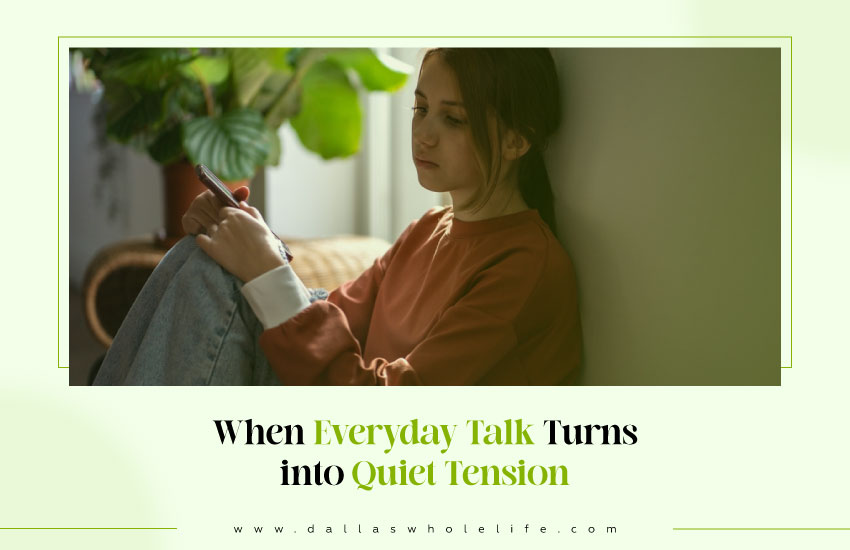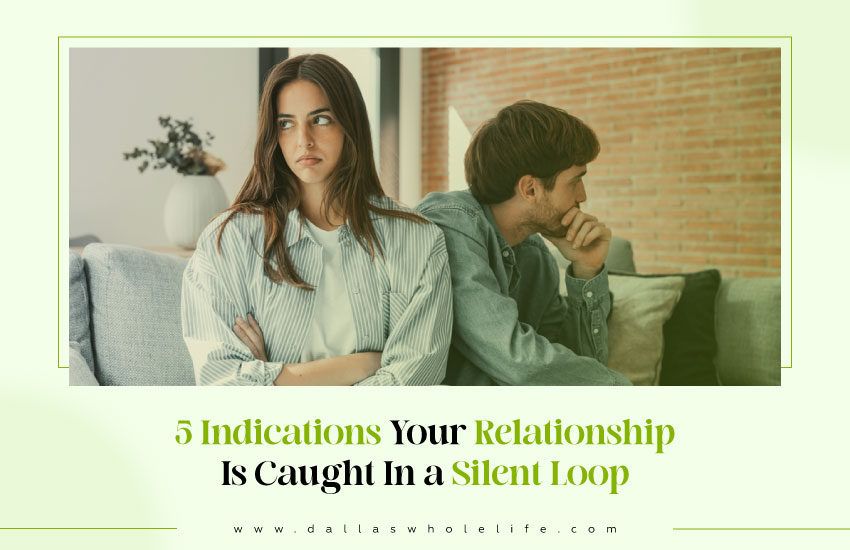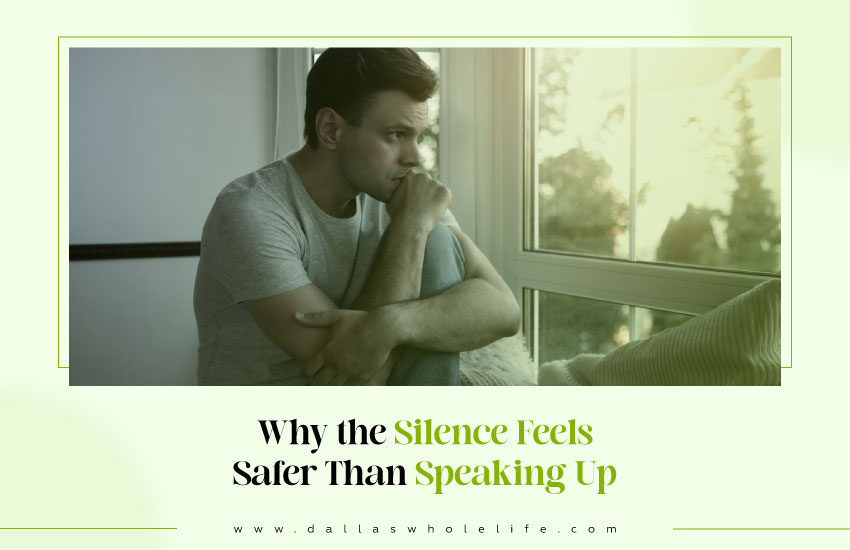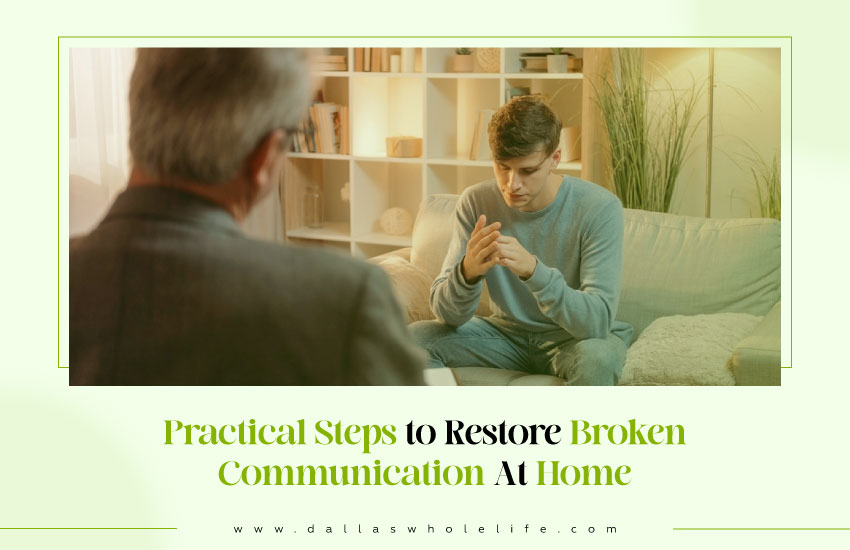Not all silence results in peace. It fills that place slowly, covers up the space of familiar conversation ghosted with unspoken tension, misunderstood feelings, and distance of emotions. Once, casual whispers over coffee or walks are now reduced to strained silence, and you are left wondering when it shifted, or how to reach out to each other again.
Reopening the bridge of communication does not really involve the right set of words, it comprises instead the rebuilding of safety, trust, and acceptance to be emotionally present. When relationships steadily remain silently eerie, it happens to many. This blog entry investigates what happens, why it happens, and how the signs of retraction can lead to some practical steps toward bringing that voice back into the room.
When Everyday Talk Turns into Quiet Tension
You are still living together, still asking if they have eaten or reminding them to pick up some milk. But the real conversations are the ones that used to be full of feelings, with worries and the current state of the relationship, all those have faded away. Now it feels that both of you are speaking around each other rather than to each other, carefully selecting your choice of words so as not to incite conflict or awkwardness.
The silence at first seems innocuous, like a busy week or an emotionally depleted night. But, as time passes, these pearls of connection lost do begin to accumulate. A skipped check-in is normalized. Eye contact diminishes. The distance between you creeps insidiously without either of you noticing at first.
Outwardly, that soft quiet can then develop into an ongoing lack of emotional closeness within a relationship. Eventually, such silence begins to feel like rejection if it is not accompanied by frequent and open conversation, so that an atmosphere that feels emotionally safe becomes or remains elusive.
5 Indications Your Relationship Is Caught in a Silent Loop
When the silence takes over at home, it’s often not loud, it’s subtle, built from everyday habits that slowly replace real connection. Although these patterns may seem small but with time they form a cycle that keeps emotional distance in place.
- Micro‑Avoidance: You avoid eye contact, skip moments to connect, or stay extra busy to avoid interaction.
- One‑Word Exchanges: The daily conversations shrink to just yes, no, fine, and enough to function, but never feel heard.
- Imagined Arguments: You play out tense conversations in your head instead of having them in reality, assuming the worst without checking in.
- Emotional Misdirection: You vent your feelings elsewhere, either on your phone or at work, but not with each other.
- Fear of Starting Small Talk: Even the light conversations feel risky, like they might uncover deeper tension that you don’t want to face.
In many cases, this emotional silence is closely tied to a sense that the relationship has become purely functional, more about logistics than love. If your connection feels like it’s only about responsibilities and not about emotional intimacy, it may be time to explore how to move beyond a transactional dynamic and rediscover genuine closeness.
Why the Silence Feels Safer Than Speaking Up
Sometimes, silence is not indifference, it is protection. Many partners choose silence because expressing themselves feels riskier. A fear of conflict, a past betrayal, or an insecure attachment style might compel silence as a form of self-protection. When conversations became arguments, led to criticism, or left one feeling emotionally shut down in the past, your brain starts to associate honest dialogue with danger rather than connection.
From the emotional retreat, it would also bind with the bodily stress response. The freeze response of the nervous system shuts down, which is a way to cope with emotional tension. So neither partner would fight or flee; instead, both partners would go into silence, fueling the distance between them. It is the safest tactic for the moment, but it can really start to chip away at intimacy with time.
Practical Steps to Restore Broken Communication At Home
Rebuilding the communication at home doesn’t require a dramatic conversation, but it begins with small and intentional changes. The key is to create safety and structure in how you connect with your partner so both feel heard and respected again.
- Set a 15‑minute check‑in ritual: create a daily or weekly space, free of distractions, pressure, or problem-solving, just to talk.
- Use “I feel… when…” statements to lower defensiveness: This simple framework helps you express emotions without blaming each other and encourages openness instead og avoidance.
- Ask curious questions: Don’t rely on assumptions, ask genuine questions like “How are you really doing?”. Even this question can go further than you think.
- Agree on a timeout signal when discussions overheat: Having a mutual pause button prevents arguments from escalating and respects each other’s emotional boundaries.
- Consider guided sessions with a licensed counselor: A neutral space like Dallas Whole Life Counseling can help you navigate deeper issues with clarity and support.
FAQs
How to heal communication after being shut down?
Start with small and safe talks. Try to focus on expressing your feelings calmly without blame. Use short and clear statements to rebuild trust through consistency in your tone and intent.
How to repair emotional disconnection?
Reconnect through shared moments like rituals, eye contact, or simply listening to each other without interrupting. Rebuilding emotional safety takes time and often requires external support from a counselor.
How to reestablish an emotional connection?
Sit with each other and be emotionally present. Ask meaningful questions and validate the feelings of your partner. Spend some time on regular check-ins that go beyond surface-level talk.
How to communicate with an emotionally unavailable partner?
Before starting the communication, be patient and clear about your needs. Instead of criticizing, use “I feel” statements. If patterns persist, consider couples therapy to create a supported space for reconnection.





